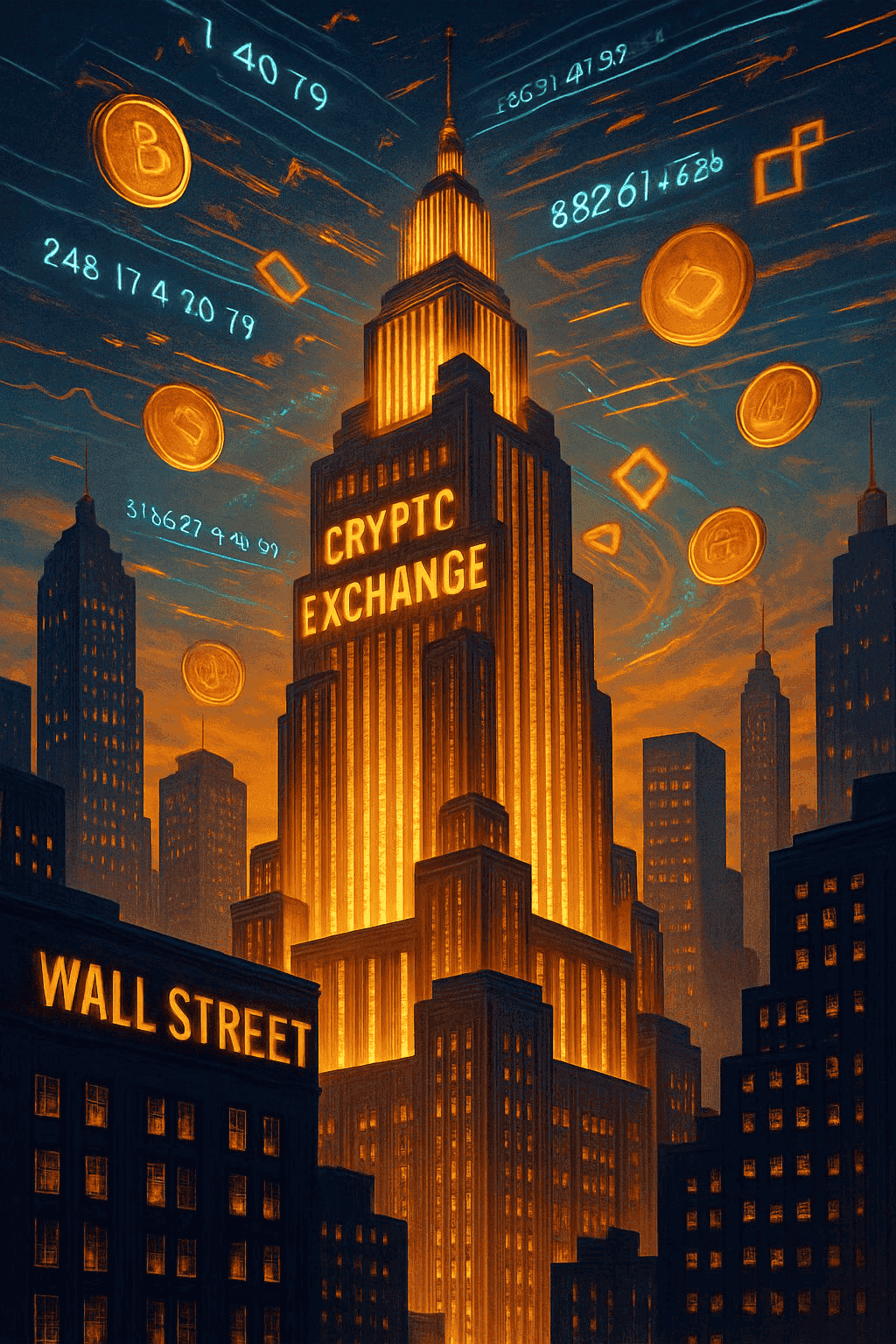Imagine: what was once a wild digital token becomes a stock on Wall Street and a formal trading instrument with institutional backing.
That's not hype — that’s history in the making.
Chapter 1: IPOs — Crypto Exchanges Go Public
 1. Bullish steps into the light
1. Bullish steps into the light
Bullish, a crypto exchange backed by Peter Thiel, filed a confidential IPO registration with the SEC — signaling that it’s ready to move from the shadows to the spotlight.
2. Gemini is next
The Winklevoss twins also filed for an IPO, following in the footsteps of Circle, whose public debut in early June saw shares surge 168% on day one.
3. The Circle effect
Circle’s explosive IPO has lit a fire under others. Names like eToro, Galaxy Digital, and Kraken are reportedly lining up for their own public offerings.
Chapter 2: Perpetual Futures — Derivatives with No Expiry
- Coinbase announced a U.S. launch of CFTC-compliant perpetual futures for BTC and ETH — allowing traders to use leverage on products without expiry, within the regulatory perimeter.
- These futures operate 24/7 and are also expanding to assets like Solana, Chainlink, Avalanche.
- This makes crypto derivatives more accessible to American investors, aligning with standards already embraced in offshore markets.
Why This Is a Game-Changer
 1.Legitimacy from traditional finance
1.Legitimacy from traditional finance
An IPO is a rite of passage. It means a crypto firm is not just a project — it’s a public company, subject to audits, governance, and investor scrutiny.
2.More access for more people
Futures create tools for both retail and institutions to hedge risks, build strategies, and participate in crypto without directly holding tokens.
3.Trust and liquidity
Regulated derivatives boost credibility. Institutions no longer have to tiptoe — they can step in.
4.Around-the-clock, stable markets
Perpetual futures operate globally, with standardized oversight — smoothing volatility between time zones.
Chapter 3: Signals of the Future
| Trend | What It Means |
|---|---|
| 📈 IPO boom | Crypto companies reach maturity — and Wall Street takes notice. |
| ⚖️ Regulated futures | Safer, more liquid entry points for institutional and retail players. |
| 🧩 Hybrid evolution | The crypto industry is merging decentralization with compliance — not to dilute it, but to empower it. |
Final Chapter: Crypto Grows Up
 Crypto is no longer a hoodie-wearing rebel shouting “decentralize everything.”
Crypto is no longer a hoodie-wearing rebel shouting “decentralize everything.”
It’s wearing a blazer, crunching numbers, and holding its own in the rooms where economic decisions are made.
With IPOs, crypto exchanges evolve from niche players into global financial institutions, answerable to shareholders and regulators alike.
With perpetual futures, Bitcoin now sits beside oil, gold, and the dollar as a mature asset class — hedged, traded, and trusted.
This isn't the end of decentralization. It’s its evolution — from ideology to infrastructure.
For the first time in crypto’s history, it’s no longer standing against the world —
it’s embedding itself into it, to transform it from the inside out.
Also reed:
- When the SEC Let Go: What the Withdrawal of 14 Crypto Rules Really Means
- Crypto Heists of June 2025: $15 Million Stolen in Two Major Hacks
Author: Slava Vasipenok
Founder and CEO of QUASA (quasa.io) - Daily insights on Web3, AI, Crypto, and Freelance. Stay updated on finance, technology trends, and creator tools - with sources and real value.
Innovative entrepreneur with over 20 years of experience in IT, fintech, and blockchain. Specializes in decentralized solutions for freelancing, helping to overcome the barriers of traditional finance, especially in developing regions.
This is not financial or investment advice. Always do your own research (DYOR).






